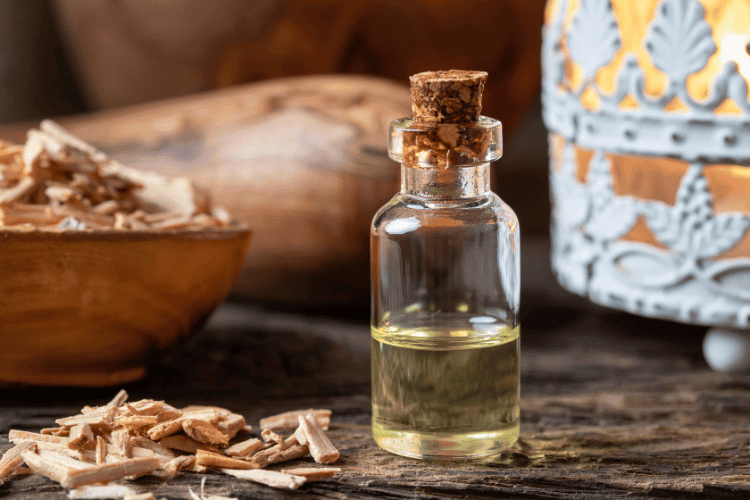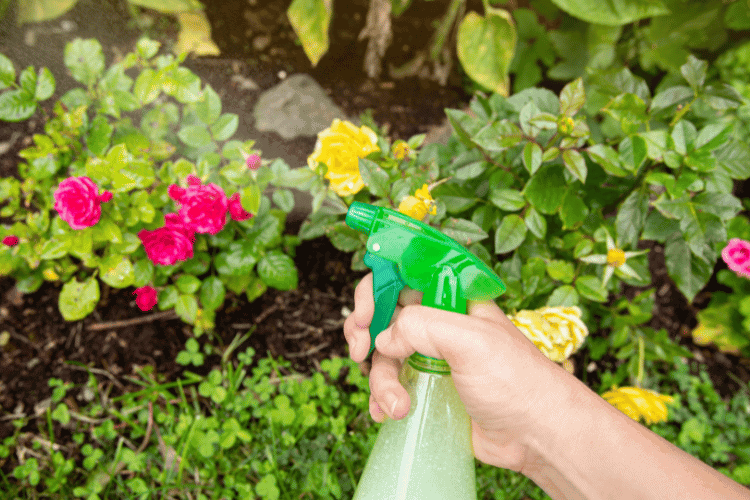Question: Does cedar oil pose a threat to our essential pollinators? Answer: No.
Cedar oil is completely safe to use near or around bees. Also known as Cedarwood oil, this conifer-derived solution is generally considered safe for bees and other pollinators.
As beekeepers, it’s essential to know the balance between natural pest control and the well-being of our buzzing companions. This post explores that in detail – so let’s get to it!
Why is Cedar Oil Safe to Use on Bees?
Wondering why cedar oil is hailed as a safe companion for our buzzing friends? The answer lies in the unique properties of cedarwood oil, a primary component of cedar oil.
Unlike pests, bees don’t utilize octopamine neurotransmitters in the same way. Cedarwood oil works by blocking these receptors in pests, causing their demise upon contact.
The Environmental Protection Agency (EPA) reinforces cedar oil’s safety, stating that its non-toxic mode of action as a pesticide has no reported adverse effects on beneficial insects like bees when used according to labeling instructions.
Cedar oil’s safety is further highlighted by its Generally Recognized as Safe (GRAS) status as a food additive by the Food and Drug Administration. This organic compound not only repels pests effectively but also poses no harm to our essential pollinators.

When to Use Cedar Oil on Bees
While cedar oil is generally safe, application timing can minimize potential risks to our essential pollinators. Evening applications are recommended, as they are less hazardous to bees than early morning applications.
Warm days and nights can extend the foraging period, making it necessary to apply cedar oil later in the evening or earlier in the morning, especially under unusually warm conditions.
Following this precaution reduces the likelihood of direct contact between bees and cedar oil, maintaining a bee-friendly balance in your yard.
Pro tip: For effective pest control without compromising the well-being of beneficial insects like bees, consider spraying your lawn thoroughly after a fresh trim.
How to Use Cedar Oil Near Beehives
Beekeepers strategically apply cedar oil spray to various hive components, including entrance boards, bottom boards, inner covers, and top covers.
Ground application below hive stands targets pests in the soil, addressing concerns like Small Hive Beetles (SHB) in the hive’s immediate vicinity.
Cedarwood oil, found in cedar oil spray, is bee-friendly, safeguarding them while effectively managing pests. Beekeepers can utilize cedar oil sparingly on hives, understanding that excessive use may inadvertently impact the bees.
How to Use Cedar Oil for Pest Control
For broader pest control in your garden, opt for non-toxic cedar horticultural oil. A simple mix of cedar oil concentrate and water, applied with a hose and sprayer applicator, provides a safe solution for a 5000 square feet treatment.
Cedar oil’s efficacy against mites, fleas, mosquitoes, bed bugs, and ticks is notable, acting swiftly without harming bees or butterflies in your garden. Its contact-based action suffocates pests by coating their exoskeletons and disrupting their metabolism, eliminating eggs and larvae.
What Other Insects Can You Use Cedar Oil On?
Like we said, cedar oil stands as a versatile defender against an array of biting insects. Its efficacy extends to pests like mites, fleas, mosquitoes, bed bugs, moths, little fire ants in Hawaii, and even the red imported fire ant.
Scientific studies, conducted in collaboration with the Agricultural Research Service (ARS), showcase cedar oil’s potential against houseflies, ticks, and mosquitoes.
Here’s a glimpse into the bugs repelled by cedar oil:
- Mosquitoes: Cedar oil proves poisonous to mosquitoes, suffocating them and causing dehydration.
- Ants: Acting as a natural barrier, cedar wood oil deters ants from treated areas.
- Roaches: Cedar’s aromatic prowess overwhelms roaches’ sense of smell, hindering their navigation.
- Flies: Cedar’s robust scent repels flies, even dissolving young ones.
- Fleas: Disturbing fleas’ chemical balance and dehydrating them, cedar oil acts as a formidable foe.
- Lice: Cedar’s unappealing scent makes it an effective deterrent, targeting lice’s respiratory systems.
- Bed Bugs: Cedar’s acids repel bed bugs and inflict respiratory damage.
- Ticks: Attacking ticks’ respiratory systems, cedar oil causes instant demise.
Also note that: The duration of protection varies with the environment. Outdoors, it lasts less due to weather changes, while indoors, it can provide safeguarding for 3-6 months or up to a year.
Consider using cedar in its various forms – from cedar mulch sprinkled near entries and insect-prone areas to incorporating cedar wood in furniture for ongoing insect-repelling benefits.
Alternative Non-Toxic Ways to Use on Bees
When seeking effective yet environmentally friendly alternatives that don’t contain toxic chemicals to deter bees, consider these non-toxic modes of action:
1. Homemade Insecticides

Create natural pest control products by steeping a mixture of chopped mint, ash, garlic, tobacco, and a small amount of soap in water for 24 hours.
Strain the mixture and apply with a watering can or a homemade broom. This catch-all deterrent proves effective against various types of insect pests.
2. Use Bee-Friendly Scents
Certain smells can effectively deter bees and unwanted insects from your home and stop them from building nests indoors.
- Lemon and Lime Juice: Bees dislike the pungent smell; slices or juice can be effective.
- Citronella: Burn citronella candles or use torches to deter bees.
- Cinnamon: Sprinkle in areas with bee activity.
- Peppermint Oil: Spray around entryways or apply directly to bee-ridden spots.
- Garlic Powder: Sprinkle around the yard; garlic cloves can also be used.
- Cayenne Pepper: Sprinkle in bee-prone areas, alone or combined with cinnamon.
- Bitter Almond Oil: Apply to wooden areas or use as a spray.
- Smoke: Use non-toxic smoke to scare bees away.
- Distilled White Vinegar: Mix with water and spray around hives.
Summary
Cedar oil, a safe and bee-friendly choice, defends against a spectrum of pests without harming our essential pollinators.
Beekeepers can strategically use cedar oil, mindful of timing and application methods. Beyond cedar oil, non-toxic alternatives present effective modes of deterrence as well.
- Does Bleach Kill Bees? - April 23, 2024
- How Do I Get Rid of Ants Without Harming Bees? - April 16, 2024
- Do Bug Zappers Kill Bees? Completely Explained - April 9, 2024
